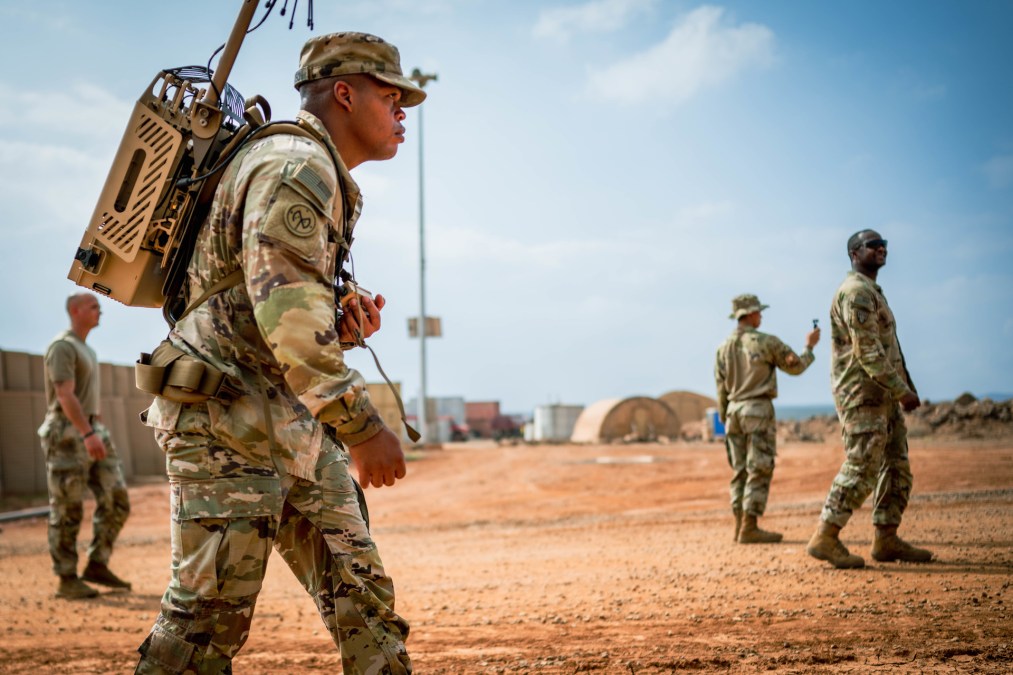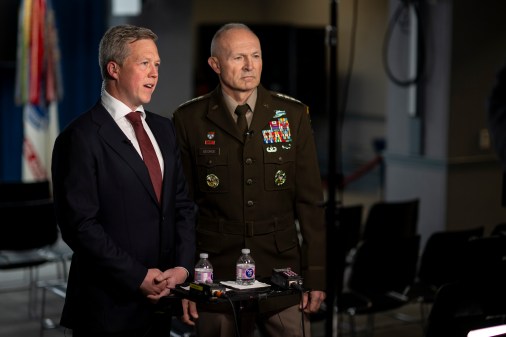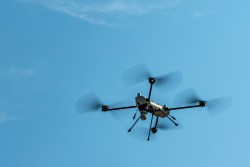Army units won’t all receive the same electronic warfare systems — and ‘that’s OK,’ officials say

This is part three of a three-part series examining how the Army is approaching electronic warfare and applying its “transforming in contact” concept — which uses deployments and troop rotations to test new equipment — to EW. You can find part one here and part two here.
PHILADELPHIA — With a variety of dynamic threats across the world, the Army is coming to terms with the fact that units across theaters will have different electronic warfare equipment based on region.
“We’re going to have to get comfortable with the fact that some things are going to be good enough for [Central Command], some things are going to be good enough for [European Command], but they may not be good enough for [Indo-Pacific Command] when it comes to the capabilities. I think collectively, the Army is starting to realize that that’s OK,” Brig. Gen. Wayne “Ed” Barker, program executive officer for intelligence, electronic warfare and sensors, said at the Army’s Technical Exchange Meeting in Philadelphia this week.
The service has been on a years-long journey to rebuild its EW arsenal after it divested much of it following the conclusion of the Cold War. Russia’s 2014 incursion into Ukraine spurred a hastening of those efforts, which mostly focused on the European theater.
Now, as the Indo-Pacific has become the priority theater for the Department of Defense, which refers to China as the “pacing threat,” the Army is forced to develop capabilities that will have to span different regions that have their own unique terrain and challenges from an electronic warfare perspective, and address different threats that employ their systems distinct from others.
“Blatant observation of the obvious is when you go to Eucom and you go to Indo-Pacom, those are completely different fights based on the physics and the geometries of the battlefield,” Col. Gary Brock, capability manager for electronic warfare, who is responsible for developing requirements for new EW systems, said at the conference.
The Pacific is primarily a maritime environment, which affects how signals move over long distances, and it has thick jungles that make it difficult for signals to pass through. Europe, by contrast, has many mountains.
To address these concerns, the Army will be tailoring kit to regions and threats, but that kit must be flexible enough to be updated rapidly to adapt to new conditions.
“Being able to have the flexibility in the software baseline, have the flexibility for reprogramming that you can take one pretty cool piece of kit that’s software defined and then tailor to the theater by either swapping in a new antenna or swapping in a better amplifier or swapping in a different software payload,” Alex Miller, chief technology officer for the chief of staff of the Army, said in an interview at the conference.
To help test this flexible approach, the Army is employing a new concept dubbed “transforming in contact,” where the service plans to use deployments and troop rotations to test new equipment — mainly commercial off-the-shelf gear — to allow units to be more responsive on a dynamic battlefield.
“The biggest takeaway, I think, is we can have the best EW techniques, we can have the best kit to identify and detect, but unless we’re doing it at the speed of the enemy, we’re not going to be successful,” Barker said in an interview at the conference.
Through this transforming-in-contact concept, the Army might not have “pure fleet” units, which means units across the service, or even maybe within the same echelon, won’t have the same version of a capability. Priority units could receive the latest and greatest, while the Army backfills others. But, officials said, just like older smartphones are still compatible with newer ones, the key will be that each kit will be integrated and interoperable.
Brock said there are several companies with commercial-of-the-shelf systems ready to go. The Army is trying to figure out how to get them to units.
“How do we take our transform-in-contact units, give them four different industry solutions across four different formations so you have a formation pure of each solution and go out and innovate in the dirt, take it to [the Joint Readiness Training Center], take it to [the National Training Center], take it to Pacific Pathways, run around an island with it — [and then] come back and tell us thumbs up, thumbs down? Industry partner innovation [is key], because industry has been great at showing up in experimentations and innovating on the fly,” he said.
Then, the companies can reengineer the systems, which produces a solution set that is quickly manageable and quickly deployable.
“It’s OK to have different solutions across different formations. We don’t have to be pure, we just have to be effective,” Brock told conference attendees. Later he told DefenseScoop: “We will have non-pure formations or non-pure equipment across formations and that’s OK … as long as it’s integratable.”
How transforming in contact changes how requirements are developed
Officials described how the new paradigm of giving soldiers capabilities on the fly is altering the traditional process of how setting requirements for programs has shifted.
Traditionally, a requirement was developed with the users. That requirement was then brought through a formal validation process, which after about 180 days or so was delivered to the acquisition community to begin presenting that to industry to develop prototypes.
Transforming in contact now accelerates this entire process whereby the requirements are done simultaneous with the program mangers.
“By the time that we get through that 180 days, they’ve already got their industry RFIs locked in and we should be ready to go with experimental models to [2nd Brigade, 101st Airborne Division] and say ‘Here is a piece of equipment that we think solves this problem. Go take it to JRTC, understand it. Here you go [2nd Brigade, 25th Infantry Division] over in Indo-Pacom, take this to an island, see if it understands it,’” Brock said. “We’re crowdsourcing the requirements through the contact brigades in real-time … much faster.”
He added that if that process does not garner a good solution, that’s fine as well because officials now understand where they need to pivot and get a better system faster than the traditional increments that are delivered across many units over years and years.
“The transform in contact is really about enabling battlefield innovation, which really means bottom up innovation and giving those soldiers the Lego blocks and saying construct what you need and then we’ll figure out how to make it industrial strength. [That] has been pretty eye-watering,” Miller said. “Their ability to go, ‘I’m going to mount [EW capability] here because this is the use case that I need,’ and having the PEO in the room and the requirements that are in the room and everybody go like, ‘We’re going to make that happen,’ that is amazing.”






